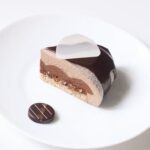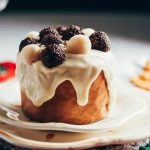The art of cake decorating involves various techniques and methods that can have a significant impact on the final outcome of a cake. One such method that is commonly used in the world of baking is the chiffon mixing method. In this article, we will explore what the chiffon mixing method entails and how it plays a crucial role in creating delectable and visually stunning cakes.
Understanding different mixing methods in cake decorating is essential for achieving the desired texture, flavor, and overall appearance of a cake. Each method has its unique characteristics and benefits, with the chiffon mixing method being particularly notable for its ability to produce light and airy cakes that are perfect for special occasions or celebrations.
The history of the chiffon mixing method traces back to its development by Harry Baker in the late 1940s. Since then, this technique has become a popular choice among bakers and cake decorators due to its versatility and ability to create beautifully textured cakes.
In the following sections, we will delve into what the chiffon mixing method entails, the specific ingredients needed, a step-by-step guide on how to use it effectively, as well as tips and tricks for successful cake decorating using this method.
History of Chiffon Mixing Method
The history of the chiffon mixing method in cake decorating traces back to the 1920s when a man named Harry Baker developed the chiffon cake recipe. This innovative method revolutionized the baking industry by introducing a lighter and fluffier texture to cakes, unlike traditional methods at that time. Baker’s recipe was closely guarded until it was eventually shared with Betty Crocker, leading to its widespread popularity.
The chiffon mixing method combines the best of both worlds from the sponge cake and butter cake techniques. It involves whipping egg whites separately to create a meringue-like foam that is then folded into a batter made with oil, sugar, flour, and egg yolks. This process results in a cake that is incredibly moist and tender, yet still light and airy – perfect for creating stunning layered cakes for any occasion.
One of the key characteristics of cakes made using the chiffon mixing method is their ability to hold up well with various types of fillings and frostings without compromising their structure or flavor. This versatility has made chiffon cakes a favorite among bakers looking to experiment with different flavors and decorations. In addition, the chiffon mixing method allows for easy customization by adding flavors such as citrus zest, extracts, or spices to create unique and delicious creations.
| Chiffon Mixing Method Characteristics | Description |
|---|---|
| Lightness | Cakes made with chiffon mixing method are light and airy |
| Versatility | Chiffon cakes hold up well with various fillings and frostings |
| Customization | Easily customize flavors by adding different ingredients |
What Is the Chiffon Mixing Method
The chiffon mixing method is a unique technique used in cake decorating that results in light, fluffy, and airy cakes. Unlike traditional mixing methods which involve creaming butter and sugar together before alternating with dry ingredients and adding liquids, the chiffon mixing method includes whipping egg whites separately to incorporate air into the batter for a lighter texture. This process creates a tender crumb and moist cake that is perfect for special occasions or when you want a delicate dessert.
One of the key differences with the chiffon mixing method is the use of oil instead of butter in the cake batter. The oil helps keep the cake moist while the whipped egg whites provide structure and lift, resulting in a cake that is both soft and springy.
Additionally, this method often requires folding in dry ingredients gently to maintain the volume created by the whipped egg whites, unlike other methods where overmixing could lead to a dense or tough cake.
When utilizing the chiffon mixing method in cake decorating, it is essential to follow each step precisely to achieve the desired result. From properly whipping the egg whites to incorporating them into the batter gently, each stage plays a crucial role in creating a successful chiffon cake. Understanding how each ingredient and technique contributes to the overall texture and flavor of the cake will help decorators master this method and produce stunning confections that are sure to impress any audience.
| Chiffon Mixing Method Characteristics | Details |
|---|---|
| Main Technique | Whipping egg whites separately to incorporate air into batter |
| Key Ingredient | Oil instead of butter for moisture and lightness |
| Critical Step | Gently folding in dry ingredients to maintain volume from whipped egg whites |
Ingredients for Chiffon Mixing Method
The chiffon mixing method in cake decorating requires specific ingredients to achieve the desired light and airy texture. These ingredients play a crucial role in the success of creating chiffon cakes that are moist, tender, and delicious. Understanding the purpose of each ingredient and how they interact with one another is key to mastering this mixing method.
Key Ingredients for Chiffon Mixing Method
One of the critical ingredients for the chiffon mixing method is cake flour, which has a lower protein content compared to all-purpose flour. This helps in creating a delicate crumb structure in chiffon cakes. Another essential ingredient is oil, which adds moisture to the cake without weighing it down like butter would. Eggs are also crucial as they provide structure and stability to the cake batter.
Other Essential Ingredients
Sugar is necessary not only for sweetness but also for tenderizing the cake crumb and aiding in browning during baking. Baking powder or baking soda is used as leavening agents to help the cake rise and maintain its light texture. Finally, flavorings such as vanilla extract or citrus zest can be added to enhance the taste of the chiffon cake.
Special Ingredients for Flavor Variations
To add different flavors to your chiffon cakes, you can incorporate unique ingredients such as matcha powder for a green tea chiffon, cocoa powder for a chocolate chiffon, or fruit purees for fruity variations. These special additions can elevate the taste profile of your cakes while still maintaining the signature lightness of chiffon baked goods.
Step-by-Step Guide to Using the Chiffon Mixing Method
The chiffon mixing method in cake decorating is a technique that results in light, fluffy cakes with a delicate crumb structure. It involves combining the dry ingredients with the wet ingredients separately, and then folding them together to create an airy batter. This method is essential for creating cakes that are not too dense or heavy, making it perfect for special occasions or elaborate cake designs.
Here is a step-by-step guide on how to properly use the chiffon mixing method in cake decorating:
1. Sift the dry ingredients: Start by sifting the flour, sugar, baking powder, and salt together to ensure they are evenly distributed and free of any lumps. This step helps create a light and tender crumb in the finished cake.
2. Mix the wet ingredients: In a separate bowl, combine the oil, egg yolks, vanilla extract, and any other liquid ingredients called for in the recipe. Whisk until well combined.
3. Incorporate the dry ingredients: Gradually add the dry ingredients to the wet ingredients, folding gently with a spatula until just combined. Be careful not to overmix as this can lead to a tough cake.
4. Whip the egg whites: In another clean bowl, beat the egg whites until stiff peaks form. This will help add volume and structure to the cake batter.
5. Fold in the egg whites: Gently fold the whipped egg whites into the cake batter until just incorporated. This final step helps aerate the batter and create that signature light texture of chiffon cakes.
By following these steps carefully and paying attention to techniques such as folding gently and avoiding overmixing, you can successfully use the chiffon mixing method in your cake decorating projects to achieve impressive results that are sure to impress both visually and tastefully.
Advantages of the Chiffon Mixing Method
The chiffon mixing method in cake decorating offers numerous advantages that set it apart from other traditional mixing methods. One of the key benefits of using the chiffon mixing method is that it helps create a light and airy texture in cakes, making them incredibly moist and tender. This unique method involves whipping egg whites separately and folding them into the batter, resulting in a delicate crumb structure that is perfect for creating fluffy, melt-in-your-mouth cakes.
Enhanced Flavors
Another advantage of the chiffon mixing method is how it enhances the flavors of the cake. By incorporating oil into the batter instead of butter, chiffon cakes have a more neutral flavor profile that allows other ingredients like vanilla extract or citrus zest to shine through. The light and airy texture created by this method also helps distribute flavors evenly throughout the cake, ensuring a delicious and well-balanced taste with every bite.
Longer Shelf Life
Additionally, cakes made using the chiffon mixing method tend to have a longer shelf life compared to other types of cakes. The combination of oil and whipped egg whites keeps chiffon cakes moist and fresh for longer periods, making them ideal for special occasions or events where baked goods need to be prepared in advance. This makes chiffon cakes not only delicious but practical as well, allowing bakers to enjoy their creations over an extended period without compromising on quality.
Tips and Tricks for Successful Cake Decorating Using Chiffon Mixing Method
The chiffon mixing method is a popular technique in cake decorating that has been used for decades to create light, airy, and moist cakes. To ensure successful cake decorating using the chiffon mixing method, here are some expert tips and tricks to help you achieve the best results:
- Properly sift your dry ingredients: Sifting the flour, baking powder, and sugar ensures that they are evenly distributed and free of lumps. This step is crucial in creating a smooth batter for the chiffon cake.
- Use room temperature ingredients: For the best results, make sure all your ingredients are at room temperature before starting the mixing process. This allows for better incorporation of ingredients and results in a more consistent texture in your cake.
- Whip egg whites to stiff peaks: One key element of the chiffon mixing method is whipping egg whites until they reach stiff peaks. This helps incorporate air into the batter and gives the cake its light and fluffy texture.
These tips are essential for mastering the chiffon mixing method in cake decorating and will help you create beautiful and delicious cakes that will impress your friends and family.
With these expert tips and tricks, you can confidently use the chiffon mixing method to create stunning cakes that are sure to be a hit at any event or celebration. Experiment with different flavors, fillings, and decorations to make each cake uniquely yours while still maintaining that signature lightness that defines chiffon cakes. Happy baking.
Examples of Cakes Decorated Using the Chiffon Mixing Method
The chiffon mixing method in cake decorating has been utilized to create stunning and delicious cakes that are light, moist, and airy. One of the key advantages of this mixing method is the ability to achieve a beautifully tender crumb while still maintaining a significant amount of structure. By incorporating both the foam cake method and the creaming method, chiffon cakes have become a favorite among bakers for their versatility and flavor.
One example of a cake decorated using the chiffon mixing method is the classic Chiffon Cake with Fresh Berries. This elegant dessert features layers of fluffy chiffon cake infused with vanilla extract and topped with a selection of fresh berries such as strawberries, blueberries, and raspberries. The light texture of the chiffon cake complements the tartness of the berries perfectly, creating a harmonious balance of flavors.
Another popular cake design using the chiffon mixing method is the Ombre Chiffon Cake. This visually stunning creation showcases layers of chiffon cake in varying shades of pastel colors, blending from light to dark.
The smooth texture and delicate crumb of the chiffon cake allow for seamless color transitions, making it an ideal choice for achieving the ombre effect. Whether baked for special occasions or everyday indulgence, cakes decorated using the chiffon mixing method are sure to impress both visually and taste-wise.
Conclusion
In conclusion, the chiffon mixing method in cake decorating offers a unique and effective way to achieve light and airy textures in cakes, making it a valuable technique for both beginner and experienced bakers. Understanding the history, ingredients, and step-by-step process of the chiffon mixing method is crucial in mastering this technique and producing stunning cake designs.
By following expert tips and tricks, bakers can enhance their skills and create beautiful cakes that not only look impressive but also taste delicious.
One of the key advantages of using the chiffon mixing method is its ability to produce cakes that are moist, tender, and have a delicate crumb structure. The incorporation of oil rather than butter adds to the overall moisture content of the cake, making it perfect for those who prefer a lighter dessert option. Additionally, the careful folding of whipped egg whites into the batter creates a fluffy texture that is sure to impress anyone who takes a bite.
As you embark on your cake decorating journey, don’t hesitate to experiment with the chiffon mixing method and unleash your creativity in creating unique cake designs. Whether you’re baking for a special occasion or simply want to elevate your baking skills, incorporating the chiffon mixing method into your repertoire will undoubtedly open up new possibilities for your confectionary creations.
So grab your mixing bowls, preheat your oven, and get ready to delight yourself and others with beautifully decorated cakes using this versatile technique.
Frequently Asked Questions
What Is the Mixing Method of Chiffon Cake?
The mixing method of chiffon cake involves separating the eggs and whipping the egg whites until stiff peaks form. Then, the remaining ingredients are mixed separately before folding in the whipped egg whites gently.
What Method of Mixing Is Used to Sponge Cake?
The sponge cake is typically made using the foaming method of mixing. This method involves beating eggs with sugar until they become thick, pale, and increase in volume. Flour is then folded in gently.
What Are the 3 Mixing Methods Used With Each Cake?
For chiffon cake, the three mixing methods used are separating and whipping egg whites to stiff peaks, combining dry ingredients separately, then folding everything together gently.

Welcome to my blog about home and family. This blog is a place where I will share my thoughts, ideas, and experiences related to these important topics. I am a stay-at-home mom with two young children. I hope you enjoy reading it! and may find some helpful tips and ideas that will make your home and family life even better!





